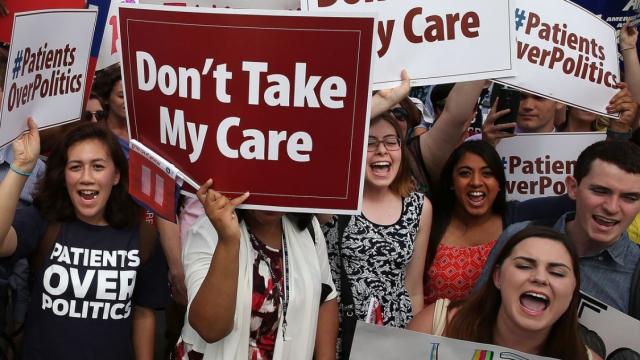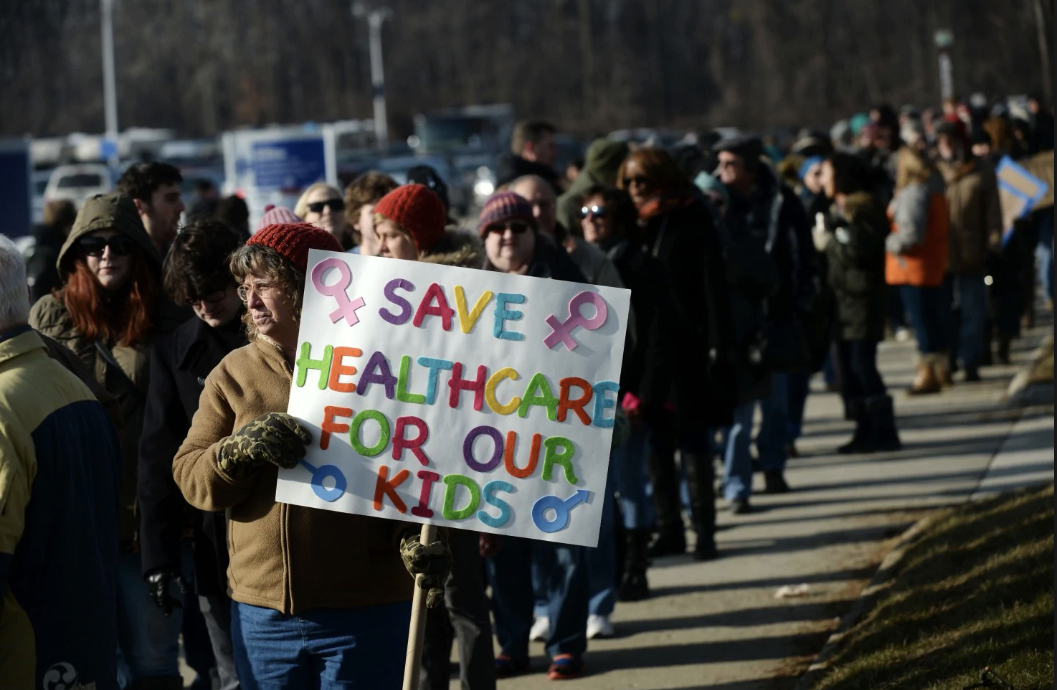
One year after the repeal of the individual mandate requiring all Americans to carry health insurance – part of the Tax Cuts and Jobs Act of 2017 – the repeal along with other actions taken by the Trump Administration are contributing to higher premiums, less coverage and more uninsured.
One of the notable aspects of the Affordable Care Act, aka Obamacare, is that it requires insurers to cover people with pre-existing conditions. At the same time, the law requires a higher standard of coverage than was previously in place. In order to insure those with pre-existing conditions, insurers need a pool of healthy individuals to offset the higher costs associated with treatment.
As a result, the Obama Administration pushed a media campaign to encourage 20- and 30- somethings – groups that in general need less medical care – to sign up for health insurance. By 2014, all Americans were required to have health insurance or pay a tax penalty.
While the requirement of insurers to cover pre-existing conditions is popular among Americans, the individual mandate was not. Republicans were unable to repeal the ACA even after gaining control of Congress and the presidency in 2017. In the tax cut legislation at the end of 2017, however, the unpopular mandate was repealed.
Survey data from the Commonwealth Fund, a private foundation whose mission is to provide quality healthcare for society’s most vulnerable, showed a 5 percent drop in Americans' overall coverage due to the repeal of the mandate.
The repeal’s effective date is 2019; however, in the year since passage of the GOP tax cut, insurance premiums have gone up, according to a recent study from the Kaiser Family Foundation. The report finds the increase anywhere between zero and 16 percent. Plans that saw no increase were attributed to insurers having overpriced plans in anticipation of rising costs, according to the report.
Exacerbating the changes made to the ACA, just prior to the repeal, the Trump Administration in October 2017 reduced cost sharing reduction subsidies (CSRs) to insurers. Cost sharing reduction subsidies are used to assist those who don't qualify for Medicaid but who are unable to obtain employer sponsored insurance. In October 2017, the administration announced it was cutting CSRs.
“Because insurers are still required to offer CSRs and to bear their costs even without a direct payment from the government, most have covered those costs by increasing premiums for silver plans offered through the marketplaces for the 2018 plan year, “ the Congressional Budget Office reported. Those purchasing silver plans can qualify for tax credits.
December 15, 2018, was the last day to enroll in the Obamacare healthcare marketplace exchanges, and preliminary reports show enrollment was down 4 percent this year, the second consecutive annual decline. The Trump Administration has cut funding for organizations that assist individuals and reduced advertising that encouraged sign-ups. Signups were down throughout 2018, increasing slightly after a push by former President Obama to get more people enrolled.
Other changes made by the Trump Administration could destabilize the markets, leaving people with pre-existing conditions without access to insurance or in high-risk pools with very high premiums. The administration in October announced changes in federal law pertaining to short-term health insurance. Short-term plans typically don’t cover those with pre-existing conditions. Under the Obama Administration, these plans were exempt from the ACA requirements for coverage but could not extend beyond three months.
Trump’s order allows the duration of these plans to extend to almost one year. While it’s too early to tell the effects of the decision, it could siphon off healthy people from the Obamacare marketplace, leading to a drastic increase in insurance premiums for those remaining in the marketplace – since the ACA requires coverage for those with pre-existing conditions.
Since 2010, after the ACA passed, its popularity overall has increased. In 2017, more Americans had a favorable view of Obamacare than unfavorable, according to the Pew Research Center. Provisions like allowing people 26 and younger to remain on their parents' health insurance plans, and expanding Medicaid in many states, remain very popular. In total, Obamacare has increased the number of insured by about 20 million.
The provisions of ACA are also popular among Republicans even as a majority oppose the law. This contradiction has put many Republican lawmakers in a bind. The 2018 House races were a battleground over Obamacare – one reason why the House flipped to Democratic control after eight years of Republican dominance, following numerous Republican attempts to repeal the law. On Dec. 14, a federal judge in Texas declared the ACA unconstitutional, following a suit by 20 Republican states attorney general. The Trump Administration praised the ruling but will continue to execute the law pending appeal.
"We expect this ruling will be appealed to the Supreme Court. Pending the appeal process, the law remains in place," White House Press Secretary Sarah Sanders has said. Supporters of the ACA have yet to announce an appeal, and with the lengthy pace of litigation, the status of Obamacare and its provisions are likely to remain a major issue leading up to the 2020 elections.












